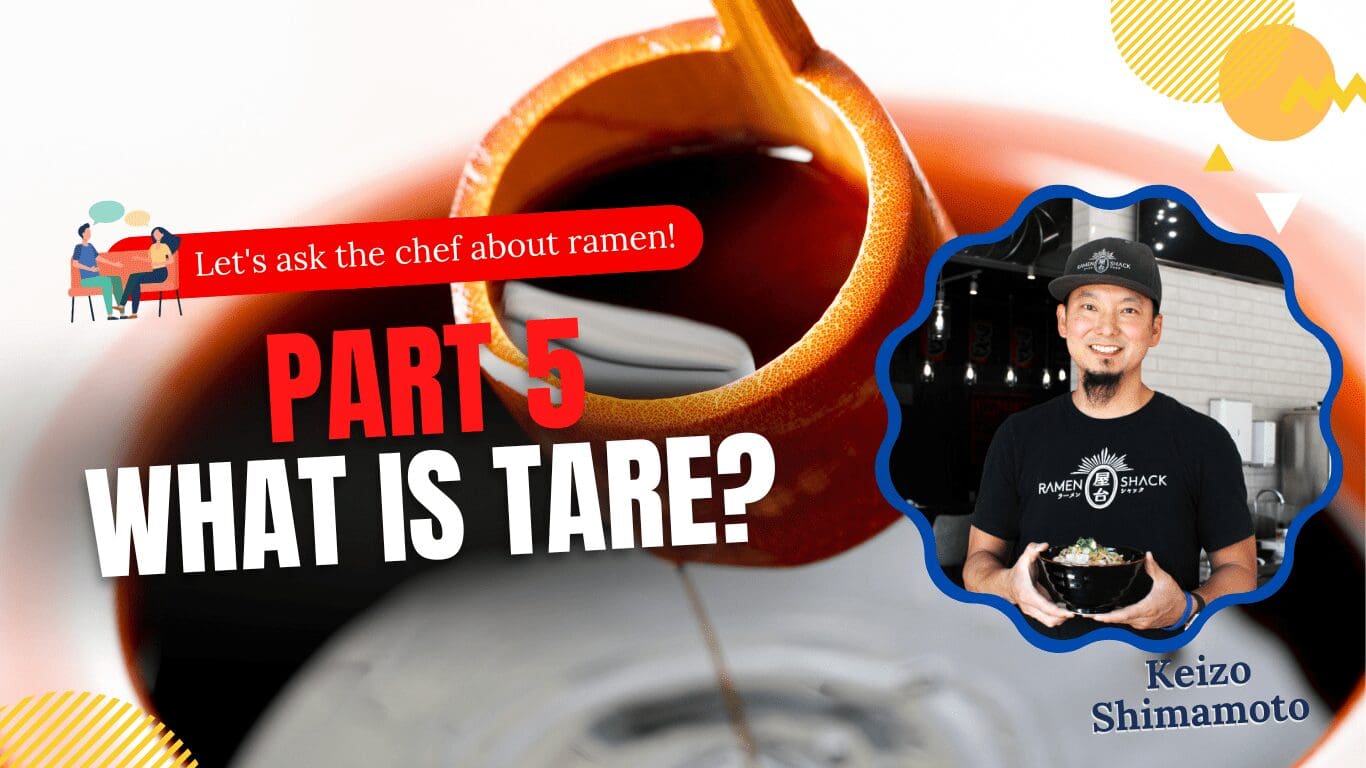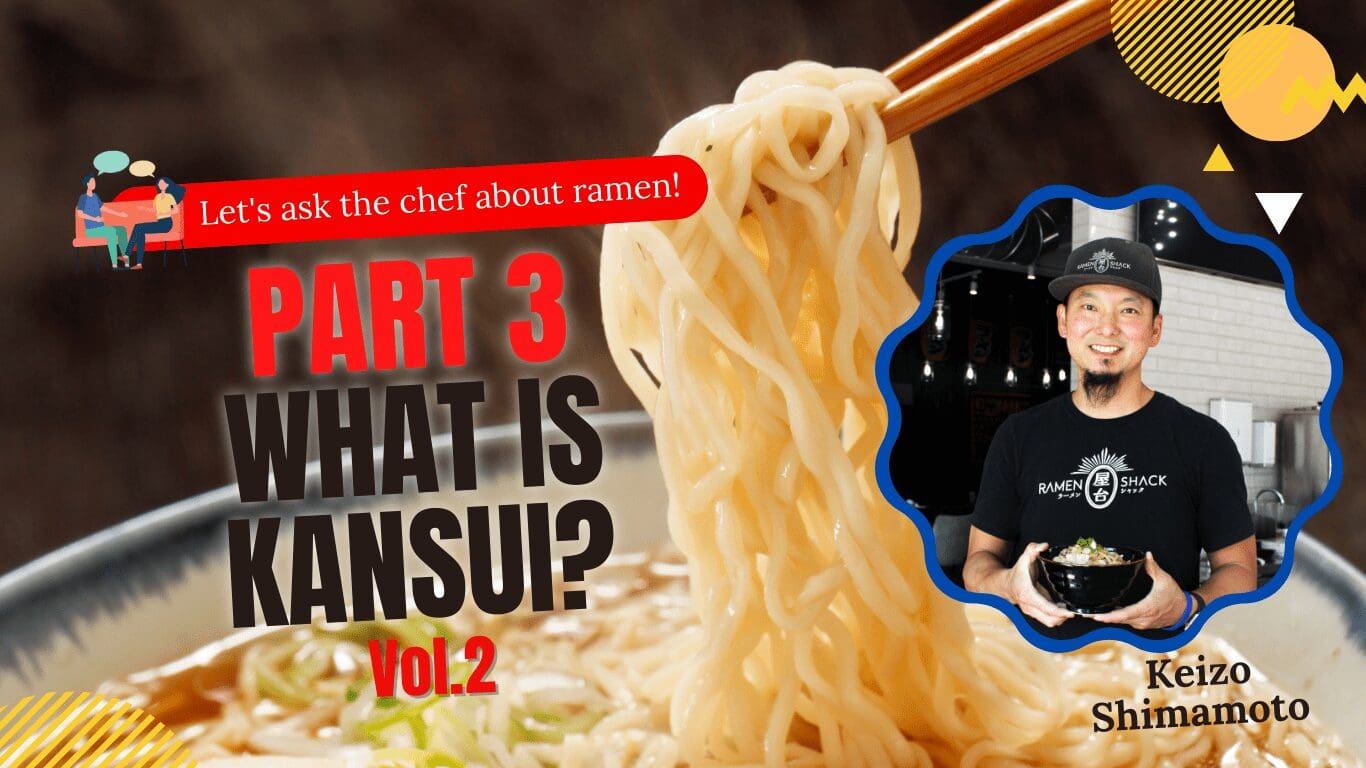The Art of Donburi, Chopsticks, and Renge: Unlock the Secrets of Ramen Mastery!
Published: Dec 21, 2023/ Last Updated:May 2, 2024
- 9 min read
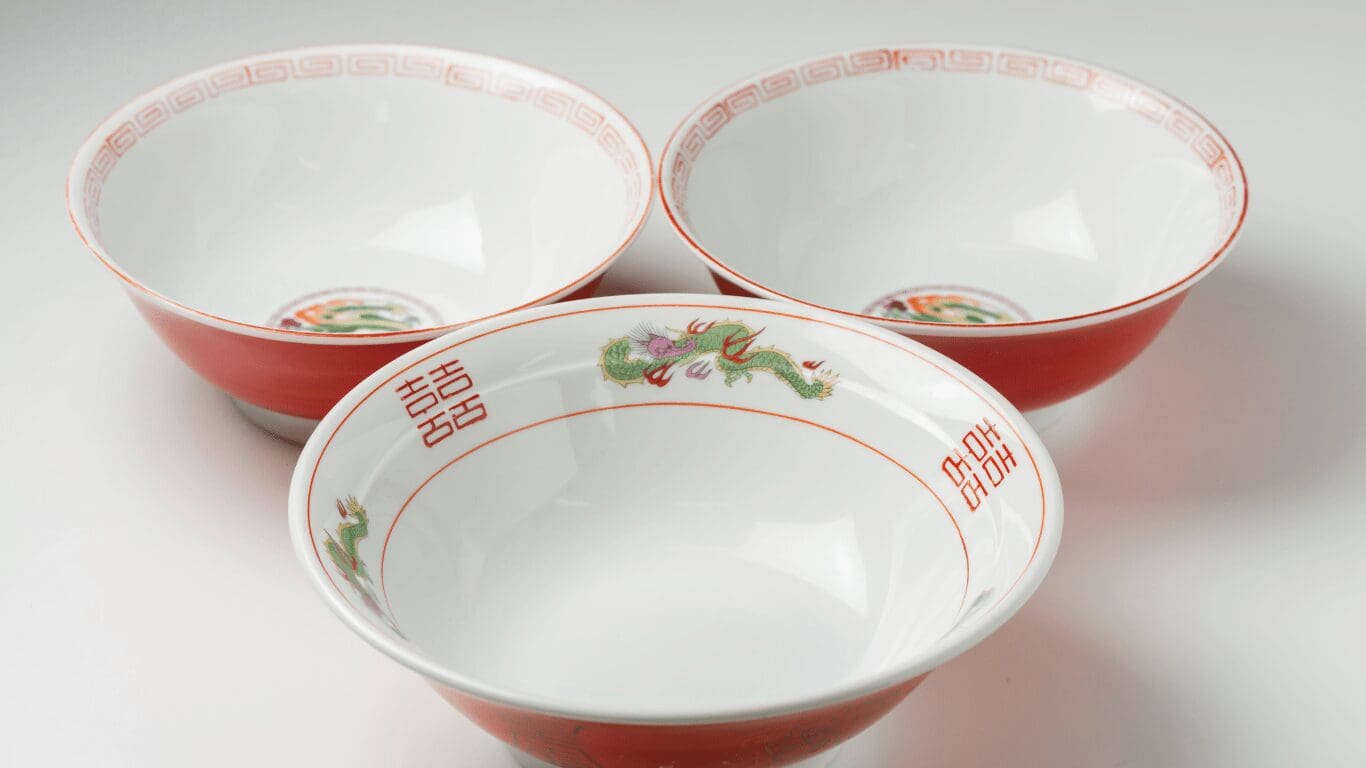
Attention Ramen Enthusiasts Around the Globe! Today, we’re spicing things up with a twist on our usual ramen tales. Instead of diving into the delicious ingredients, we’re turning the spotlight to the unsung heroes of your ramen experience – the tableware!
Meet the essential trio: the Donburi (your trusty ramen bowl), Chopsticks (the skillful noodle navigators), and the Renge (the profound ramen spoon). Ever wondered about the art of lifting noodles with chopsticks, the technique of a perfect slurp, and the subtle art of savoring soup with a renge? We’re taking a deep dive into these everyday items to reveal their hidden variety and quirks.
This issue is not just about eating ramen; it’s about appreciating the subtle craftsmanship of the tools that elevate your ramen experience. We’re skipping over the unique cases like tsukemen and mixed noodles – just for now – to focus on the classic ramen experience.
Get ready for a flavorful exploration that will transform your next ramen restaurant visit! It’s time to embark on another mouth-watering adventure. Let’s dive in!
- Index
- Ramen donburi bowls in various shapes
- What is the identity of the pattern on the ramen bowl?
- The difference between Waribashi (disposable chopsticks)
- Let’s make Hashioki (chopstick rest) out of chopstick bags!
- Renge, which evolved uniquely in Japan
- Conclusion
Ramen donburi bowls in various shapes
Have you ever caught yourself marveling at the varied shapes of ramen bowls, each unique to its restaurant? If you’ve spotted these subtle differences, congratulations – you have the eye of a true ramen connoisseur! In this section, we’re delving into the fascinating world of Donburi – the iconic ramen bowls. Each shape serves a specific purpose, carefully chosen by the restaurant to enhance your ramen experience.
・Koudai Don/Sori Koudai Don
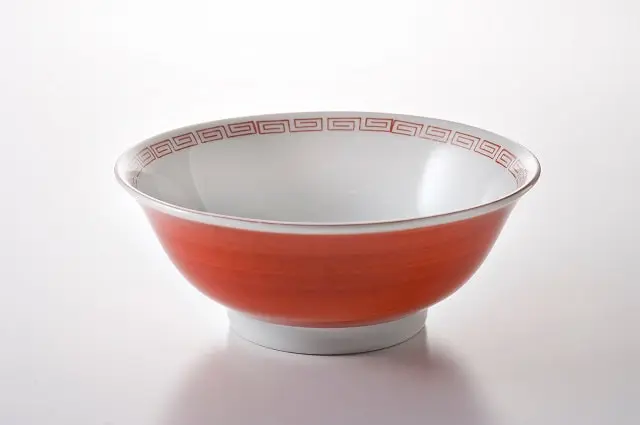
Chances are, you’ve encountered the Koudai Don, or its variant, the Sori Koudai Don – the most popular type of ramen bowl out there!
What sets the Koudai Don apart? Two things: the elevated foot at the base and its slightly curved rim. This design isn’t just for looks; it’s a culinary strategy. The high foot makes it easy to hold the bowl, minimizing heat transfer to your hands. Plus, the unique rim shape adds an aesthetic flair.
But the real magic lies in its capacity. Designed to hold a generous amount of soup, the Koudai Don is perfect for those restaurants aiming to serve you a hearty, satisfying meal.
・Kittachi Don
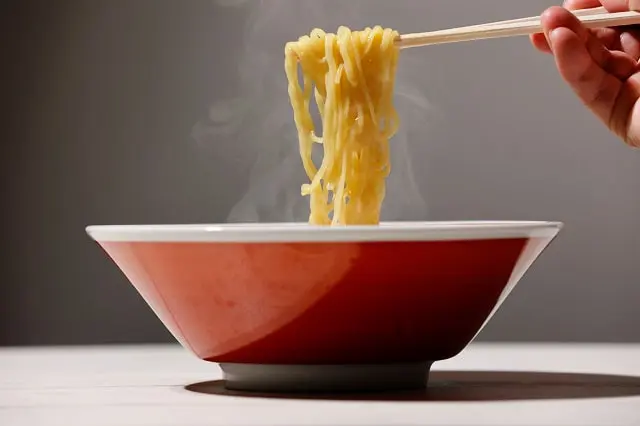
Unlike the more common rounded bowls, the Kittachi Don stands out with its straight sides. It’s not just about aesthetics; this design has a purpose. The bowl is lower in height and just the right size to fit comfortably in one hand. Why does this matter? It’s perfect for serving ramen styles that are modest in portion, like the famous Hakata ramen, and is brilliantly designed for kaedama – that delightful extra serving of noodles.
The Kittachi Don’s smart design makes it a dream for storage. These bowls are incredibly stackable, saving precious space in bustling ramen kitchens.
・Tama Don/Tamabuchi Don
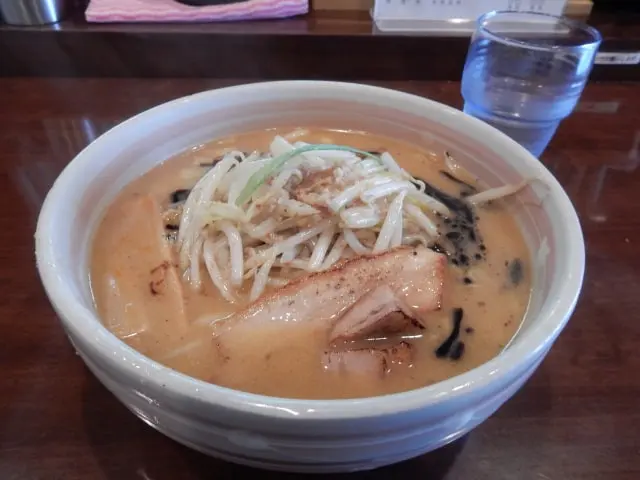
What makes the Tamadon special is its robust rim – designed not just for a unique look but also for practical durability. The thicker rim is less prone to chipping, a small but significant detail that makes a big difference in lively ramen kitchens.
But where does the Tamadon truly shine? It’s the go-to choice for ramen loaded with ingredients or for serving Champon – a regional ramen delight packed with exotic influences from Nagasaki. (Curious about Champon? Check out our article “CHAMPON: A REGIONAL RAMEN WITH EXOTIC INFLUENCE FROM NAGASAKI. HOW IS IT DIFFERENT FROM RAMEN?” for an in-depth look!)
・Tayou Don
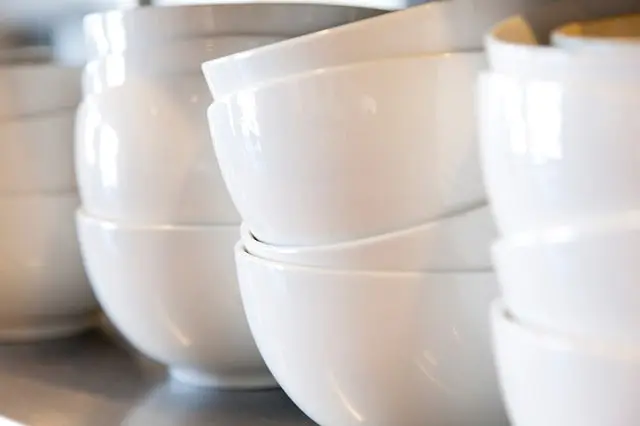
As its name implies, the Tayou Don (多用丼), which translates to ‘multi-use bowl’, is the epitome of versatility in the world of Japanese cuisine. This bowl isn’t limited to just one type of dish; it’s designed to accommodate a wide array of meals. From the hearty depths of a ramen broth to the delicate balance of a katsudon, the Tayou Don is perfect for everything – including various rice bowls and noodle dishes like udon and soba.
・Men Don/Men Bachi
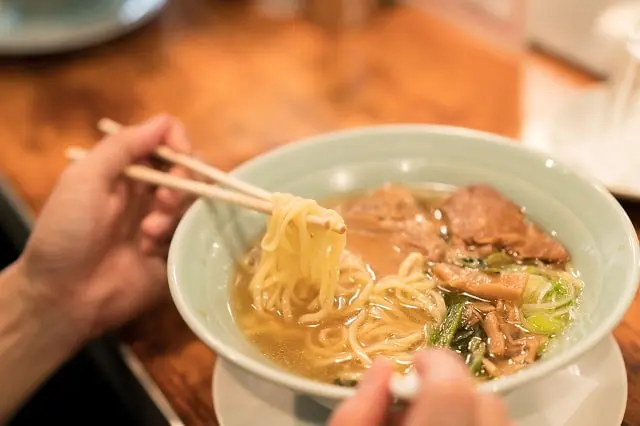
Meet the Men Don (or Men Bachi), characterized by its wide, open shape that combines both depth and breadth. This bowl is not just large; it’s thoughtfully designed to enhance the presentation of your meal. The round and deep structure of the Men Don makes it an ideal choice for creating visually appealing servings.
■What is the identity of the pattern on the ramen bowl?
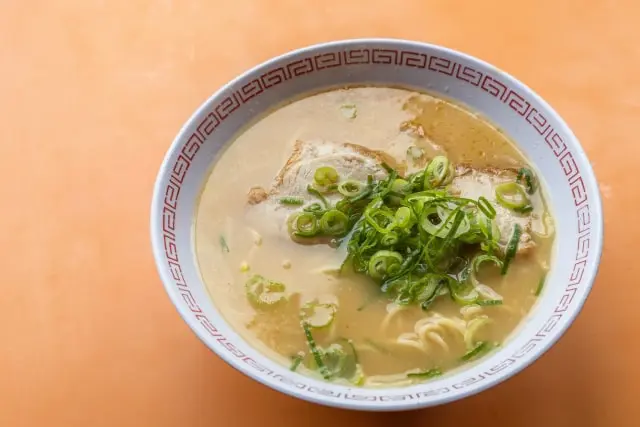
Venture into the world of ramen, and you’ll notice a fascinating blend of old and new. While modern ramen shops often opt for sleek, monochrome bowls in black or white, longstanding Japanese ramen establishments hold onto a piece of history with bowls adorned in a captivating swirl pattern.
This iconic pattern, known as Raimon (雷紋, translating to ‘thunder crest’), isn’t just a decorative choice. It carries a rich legacy that spans over 3,000 years, originating in ancient China. The Raimon, symbolizing a lightning bolt, was revered as a harbinger of rain and, consequently, a good harvest.
But how did this Chinese emblem find its way into Japanese ramen culture? The tale begins in 1909 with Seitaro Moto from Ishikawa Prefecture. He opened a store in Kappabashi, Tokyo, hoping to sell decorative Kutani ware. However, the demand for these ornamental pieces was underwhelming. In a strategic pivot, Moto began supplying tableware to local restaurants, including the burgeoning ramen shops in nearby Asakusa.
One of these, Rai Rai Ken, established in 1910, played a pivotal role. As ramen (then known as ‘Shina soba’ or Chinese Noodle) gained popularity, there was a demand for a distinct bowl design for these establishments. The auspicious Raimon pattern, deeply rooted in Chinese heritage and also a common motif in Kutani ware, became the chosen design.
This pattern isn’t just a design; it’s a bridge between cultures and a nod to the historical journey of ramen. Next time you spot the Raimon in a ramen bowl, whether it’s in the classic setting of a Japanese shop or in the fictional world of ‘Naruto’s’ Ichiraku Ramen, remember it’s more than just a pattern – it’s a piece of culinary history. For a deeper dive into ramen’s evolution, don’t miss our article ‘WHAT IS RAMEN? HOW THE HISTORY AND ELEMENTS LEAD TO MODERN-DAY RAMEN‘.
■The difference between Waribashi (disposable chopsticks)
Chopsticks are an integral part of the ramen experience, and the variety is vast – from materials and shapes to specific uses. But in this exciting delve, we’re zooming in on a particular kind: ‘Waribashi’ or disposable chopsticks, a staple in ramen stores.
Even within the realm of Waribashi, the diversity is astounding. They range from the elegantly crafted ones in upscale dining to the more straightforward pairs found in convenience stores. However, when it comes to ramen eateries, there are three types of Waribashi that stand out as the most commonly used.
So, next time you’re seated in a ramen restaurant, ready to dive into a delicious bowl, take a moment to observe the Waribashi provided. It’s not just a tool for eating; it’s a part of the culinary culture, each type telling its own story of functionality and aesthetic choice.
・Genroku
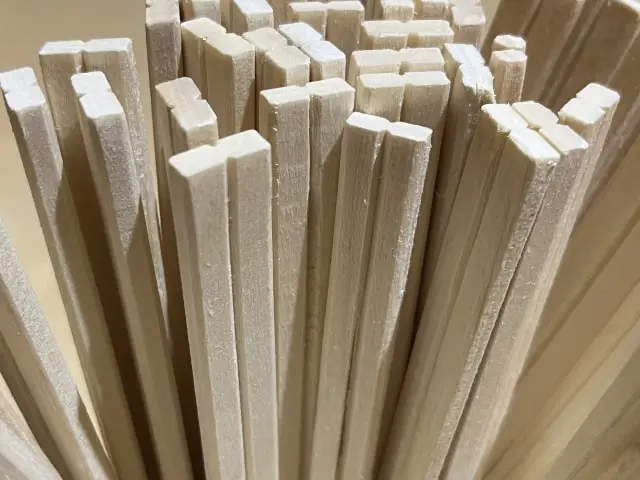
In the diverse world of disposable chopsticks, ‘Genroku’ chopsticks reign supreme in terms of widespread use. Their defining feature? The distinctive grooves that make them easy to split. Not only does this design offer convenience, but it also makes them an economical choice for many establishments.
Crafted mainly from aspen and Japanese white birch, Genroku chopsticks are a marvel of efficiency. Their name has an intriguing historical connection. It’s derived from the ‘Genroku koban,’ a type of gold coin minted during the financially challenging times of the Genroku era in the mid-Edo period. Just as the koban was produced with less gold to save costs, Genroku chopsticks are designed with reduced wood usage. This is achieved by shaving the four corners and grooving along the lines where they split, leading to their distinct name and form.
・Tensoge
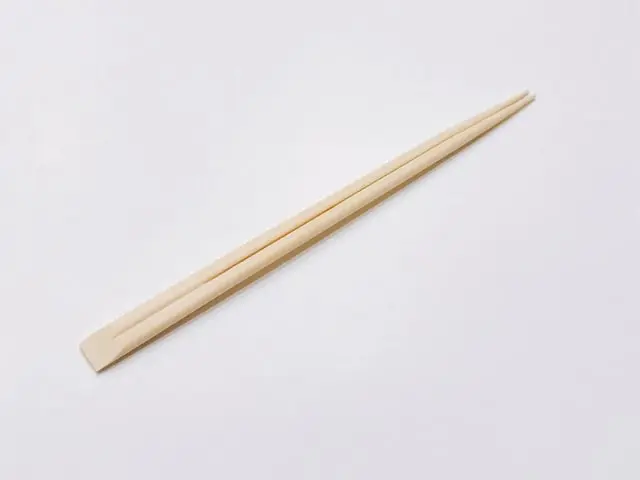
Among the myriad styles of disposable chopsticks, Tensoge stands out for its elegant design that celebrates the natural beauty of wood. What sets Tensoge apart? It’s the artful cutting of the handle side at an angle, a subtle touch that enhances the wood grain’s visibility and adds a touch of sophistication.
Crafted from materials like Ezo spruce, bamboo, and cedar, Tensoge chopsticks are more than just eating utensils; they are a statement of hospitality. These materials are chosen not just for their strength and durability, but also for their aesthetic appeal.
・Sousei
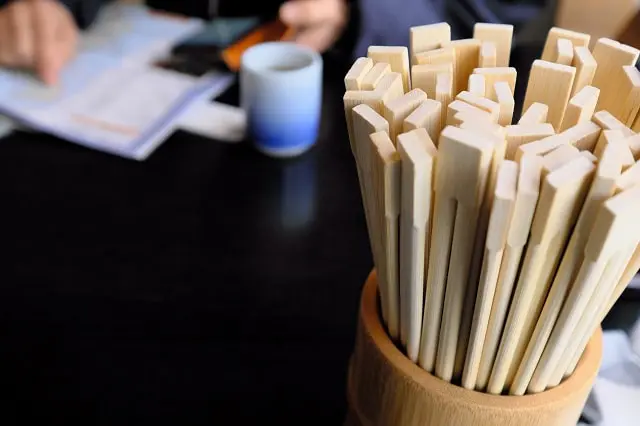
Sousei Bashi chopsticks are a unique and practical choice in the world of dining. Their standout feature? The connected ends on the handle side, paired with a thin, rounded tip. Crafted from bamboo, these chopsticks are not only strong but also resistant to oil absorption, making them an ideal choice for restaurants specializing in fried foods, beyond just ramen joints.
■Let’s make Hashioki (chopstick rest) out of chopstick bags!
Venturing slightly off the beaten path of our chopstick discussion, let’s dive into a fascinating aspect of Japanese dexterity – the art of folding chopstick rests from waribashi wrappers! It’s a popular belief that the Japanese are remarkably skilled with their hands, and what better way to witness this than at a ramen restaurant?
Imagine inviting your Japanese friends to a ramen outing. As you enjoy your meal, present them with a playful challenge: can they transform the humble paper bag of their disposable chopsticks into a rest? More often than not, they’ll skillfully rise to the occasion, lending credence to the notion that “Japanese people are dexterous with their hands.”
But here’s a little secret: crafting a chopstick rest from a waribashi wrapper is not as daunting as it may seem. To demystify this skill, we’ll share a video tutorial that breaks down the steps. It’s surprisingly straightforward! Once you’ve watched it and practiced a bit, you too can join in on this delightful tradition. Try it out on your next ramen adventure and impress your friends with your newfound chopstick rest-folding prowess.
■Renge, which evolved uniquely in Japan
Let’s explore the renge, an essential yet often overlooked element in the world of ramen. Known also as the ‘Chinese spoon,’ the renge has its roots in ancient China and made its way to Japan during the Heian period (794–1185), marking it as a piece of tableware with centuries of history.
Interestingly, it was only about a hundred years ago that the renge began to gain widespread popularity in Japan, coinciding with the rise of ramen restaurants. Prior to this, the Japanese tradition of sipping soup directly from the bowl may have influenced the slower adoption of the renge.
But what’s truly captivating is the origin of its name. The official term for the renge is ‘Chirirenge’ (散蓮華), which translates to ‘scattered lotus flower.’ This poetic name comes from its shape, reminiscent of a single lotus petal adrift. Next time you lift a renge to savor the broth of your ramen, take a moment to appreciate its elegant design, a nod to the beauty of nature and a reflection of the refined sensibilities of the past.

Dive into the diverse world of renge, where material and design come together to create the perfect spoon for ramen. From classic ceramic and traditional wood to modern, cost-effective plastic versions made from one-piece molding, the renge has adapted to the needs of the times. But let’s focus on a particularly ingenious design used in many ramen stores.
Imagine this familiar scenario: you’re enjoying a steaming bowl of ramen, and suddenly, your renge slips into the soup, emerging covered in broth. It’s a small frustration many of us have faced (myself included). This led to a clever innovation – a renge with a lozenge-shaped cutout at the base of the scoop, designed to hook onto the bowl’s edge. This simple yet effective modification prevents the renge from taking an unintended dive into your soup.
When we first encountered this improved renge, the phrase “necessity is the mother of invention” instantly sprung to mind. It’s a perfect example of how a small change can significantly enhance the ramen dining experience, keeping our spoons accessible and our broth unsullied.
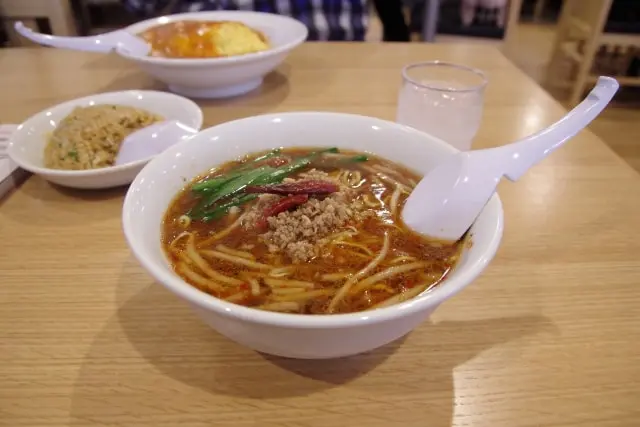
Now, let us introduce you to another marvel in the world of renge – the perforated renge. This ingenious design is a game-changer, especially for ramen enthusiasts who love corn in their noodles or enjoy the complexity of tantanmen with minced meat.
Picture this: You’re savoring a bowl of ramen, and you want to enjoy just the toppings without scooping up too much soup. The perforated renge makes this effortless. Its design allows you to lift only the solid ingredients, leaving the broth behind. The joy of fishing out a corn kernel or a piece of minced meat with this renge? It’s akin to striking gold in a culinary gold rush. Sure, that might sound like a bit of an exaggeration, but the excitement is genuinely comparable!
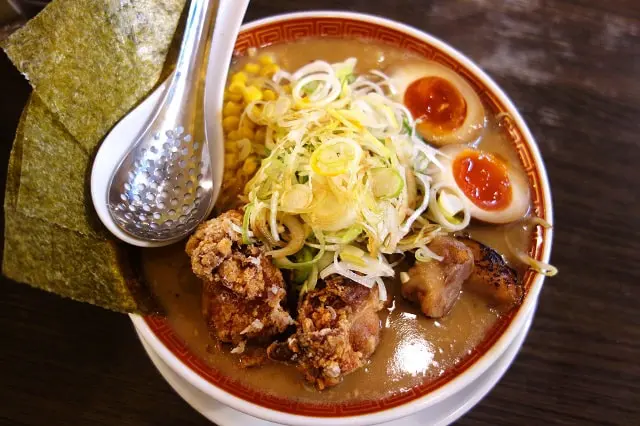
What ties these two types of renge together is the Japanese commitment to enhancing the ramen dining experience. It’s a testament to the ‘Kaizen Spirit’ of continuous improvement, a philosophy deeply ingrained in Japanese culture. This dedication to making every aspect of ramen enjoyable, right down to the spoon you use, is truly remarkable.
■Conclusion
In this edition, we embarked on a culinary journey exploring the quintessential tableware of ramen: the donburi (ramen bowl), chopsticks, and renge (ramen spoon). Did these insights add a new layer of appreciation to your ramen experiences?
While we’ve covered a lot of fascinating ground, there’s still a vast world of ramen-related knowledge out there. Take, for example, the ‘Raimon’ pattern we discussed – it’s just one of the myriad distinctive designs adorning ramen bowls. The depth and variety of these patterns alone could fill pages, and I’m eager to dive into them in future articles.
As we close this issue, we hope you’ve gained a deeper understanding and appreciation for the art and craft behind the simple act of enjoying ramen. Stay tuned for our next issue, where we’ll unravel another exciting topic for all you ramen aficionados out there! Until then, keep savoring your ramen, and maybe even impress your friends with your new-found knowledge of its essential tableware.
Reference links:
ラーメンどんぶりの種類と模様の意味|有限会社 和泉屋
【ラーメン】器・どんぶり「模様や絵柄」の意味と由来について。 | ニライカナイのいろは
ラーメン丼の模様の意味:龍やうずまきが書かれるのはなぜ? | 株式会社GRAST
ラーメン丼の渦巻き模様「雷紋」の秘密 – 知ると得する栄養雑学・豆知識:アスレシピ
雷紋 – Wikipedia
散蓮華 – Wikipedia
割り箸の様々な形状や材質における解説と専門業者に相談するメリット | 折兼ラボ | 株式会社折兼
『れんげ』を購入する前に知っておきたい、れんげ選びのポイント3選|USENの開業支援サイト|canaeru(カナエル)
ラーメンのお供レンゲの歴史 | 苫小牧のラーメン店 RAMEN LAB REN ~煉~
